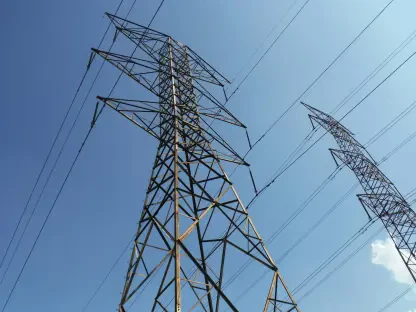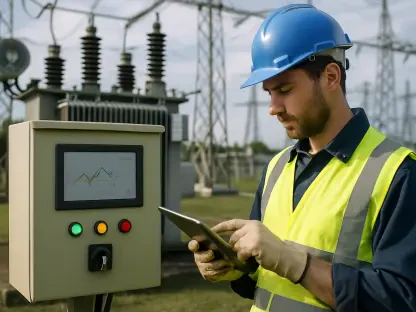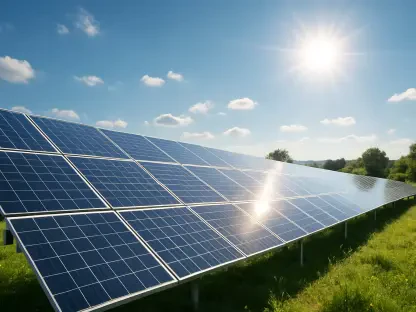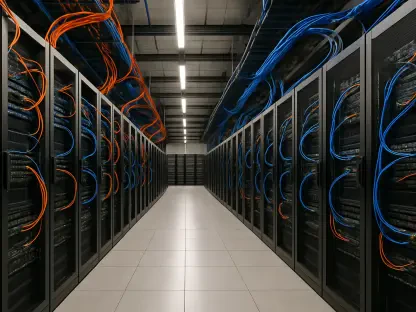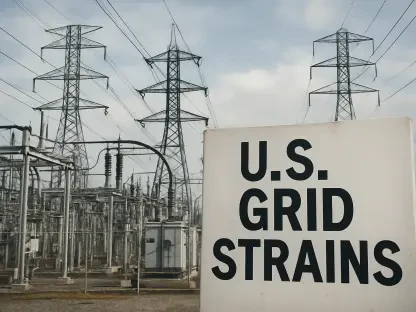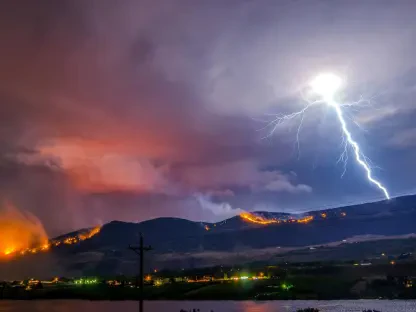The drive towards renewable energy is gaining momentum, and with this transition comes a critical necessity: the substantial upgrade of global electricity grids, the lifelines of modern society. As wind and solar power continue to eclipse traditional fossil fuel sources, the demand for an efficient and modern grid system that can handle these energy sources is paramount. Without adequate infrastructure, renewable energy cannot be effectively harnessed or distributed, leaving consumers with inconsistent energy supply and hampering the global efforts towards a sustainable future. This challenge is particularly pressing in regions where electricity grids are antiquated, fragmented, and overwrought, effectively putting a damper on the considerable strides made in renewable energy technology. Europe, for instance, has set ambitious net-zero targets to reduce reliance on fossil fuels, and yet the installed grid systems remain outdated, suggesting a need for immediate investment in this critical infrastructure. This scenario underscores the urgency for enhancing grid resilience and modernizing frameworks to facilitate a smoother transition to renewable sources.
Financial Imperatives for Grid Modernization
Modernizing the electricity grid to accommodate renewable energy sources presents a considerable financial challenge that cannot be understated. The requirement for substantial investment is evident when considering estimates, such as those from the European Commission, indicating that between $2.28 trillion to $2.62 trillion is required by 2050 to fulfill grid expansion and upgrade needs in Europe alone. This projection highlights the enormity of the financial undertaking that nations globally need to commit to ensure a future where renewable energy can be reliably deployed. The disparity between investments in renewable technology development, such as solar panels and wind turbines, compared to grid infrastructure enhancements reveals a significant gap. The International Energy Agency points out that global annual investments in grid infrastructure, at approximately $400 billion, fall woefully short of the $1 trillion spent on generation assets, signaling an imbalance that needs addressing. Achieving parity in these investments is paramount to ensuring sustained electricity security and facilitating the seamless integration of renewable power sources into mainstream use.
Addressing the existing gap necessitates a coordinated effort to streamline processes and overcome existing challenges such as permitting delays and supply chain issues that inflate the costs and extend the timelines for grid enhancements. Lengthy permitting procedures and constraints in the availability of essential components like cables and transformers further exacerbate the issue. Policymakers and stakeholders must prioritize reducing these bottlenecks to facilitate a swifter transition to enhanced grid systems. Recent energy crises, like the significant blackouts experienced in parts of Europe, highlight the urgent need for resilient and robust grid systems and act as a sobering reminder of the critical role grid infrastructure plays in energy security. With renewable energy projects often stalled due to delays in grid connectivity, streamlined processes and strategic investments in grid expansion are necessary to mitigate potential delays and economic losses associated with energy inefficiencies.
Challenges in Achieving Investment Parity
Amid global ambitions to amplify renewable energy capacities, a notable challenge has emerged: achieving investment parity between renewable energy generation technologies and grid infrastructure enhancements. At present, the lopsided investment landscape sees a disproportionate amount of funds allocated towards the development of generation assets, leaving grid networks wanting for necessary upgrades. This imbalance spells potential consequences for energy reliability, security, and efficiency. The International Energy Agency stresses that to sustain electricity security against future demands, investments in grid infrastructure must reach parity with those in generation assets by the early 2030s. Ensuring robust infrastructure capable of handling increased renewable energy capacity is crucial not only to secure energy supplies but also to optimize returns on investment in generation technologies.
Crucial to bridging this investment gap is overcoming numerous hurdles that presently deter investment. Lengthy permitting procedures coupled with supply chain challenges, particularly in acquiring vital components like transformers, hinder progress. These bottlenecks, if left unaddressed, could stymie efforts to modernize and expand grids in tandem with evolving renewable energy technologies. This predicament is particularly pronounced in the European context, where grid infrastructure is often decades old and suffers from inefficiencies that exacerbate issues related to integrating new renewable energy projects. Despite significant increases in renewable generation, these inefficiencies could delay projects for years due to inadequate infrastructure, postponing benefits in both environmental impact and economic cost savings. Accelerating enhancements in grid frameworks demands improved policy measures, coordinated planning across regions, and streamlined permitting that can respond dynamically to the fast-paced nature of renewable energy technology advancements.
Strategic Focus and Global Coordination
In the global pursuit of renewable energy adoption, there is a compelling call for a strategic focus on reinforcing grid infrastructure, which remains a critical but often underappreciated aspect of the transition. As countries navigate the tricky waters of funding these ambitious plans, international cooperation and innovative financing solutions become central to ensuring success. Countries globally are grappling with the challenge of reallocating resources to accommodate rising grid infrastructure demands. Efforts to prioritize infrastructure spending alongside renewable energy generation investments speak to a renewed strategic focus necessary for the energy transition’s long-term viability. Collaborative efforts extending beyond individual country borders can facilitate sharing of best practices, technology transfer, and creation of cohesive policies that support the expansion of resilient energy systems.
Furthermore, innovative financing options could offer promising solutions to address the burgeoning demand for funds in grid transformation projects. Public-private partnerships, for example, can act as catalysts for investment, drawing in private sector expertise and capital to supplement governmental financial support. Similarly, international financial institutions have the potential to play a pivotal role by providing targeted grants and loans that can alleviate the financial burden on individual governments, allowing for more widespread implementation of grid modernization projects. The synergy between public funding, private investment, and international financial backing is crucial in financing the infrastructure critical to enabling renewable energy to flourish on a grand scale. Global collaboration and a unified commitment to funding the grids of the future will not only aid in achieving sustainability goals but also ensure that the benefits of renewable energy are equitably distributed.
Ensuring Sustainability Through Infrastructure
The global push towards renewable energy is in full swing, prompting an urgent need to substantially upgrade worldwide electricity grids, which are essential to modern life. As renewable sources like wind and solar exceed traditional fossil fuels, it’s crucial to have an efficient, modern grid system capable of accommodating these sources. Without proper infrastructure, it’s tough to effectively harness and distribute renewable energy, leading to inconsistent supply and hampering global sustainability goals. This is particularly vital in regions where electric grids are obsolete, fragmented, and under immense strain, stifling progress in renewable technologies. Take Europe, for instance, where ambitious net-zero targets aim to cut fossil fuel reliance, yet existing grid systems are outdated, indicating an immediate need for investment in infrastructure. This situation highlights the necessity to enhance grid resilience and update systems, ensuring a smooth transition to renewable energy and helping achieve a sustainable future for all.



